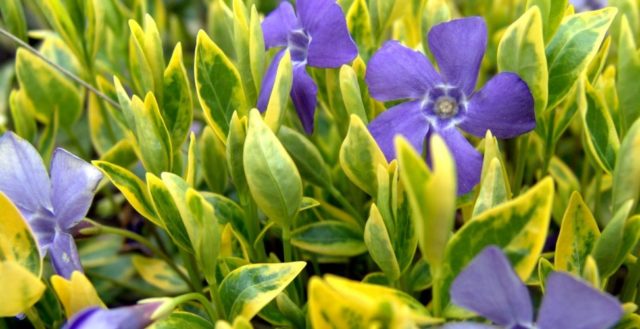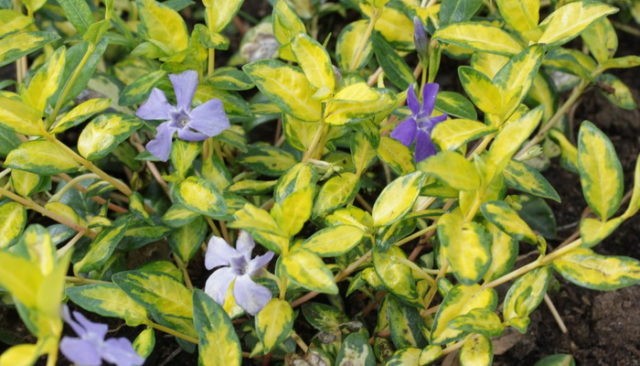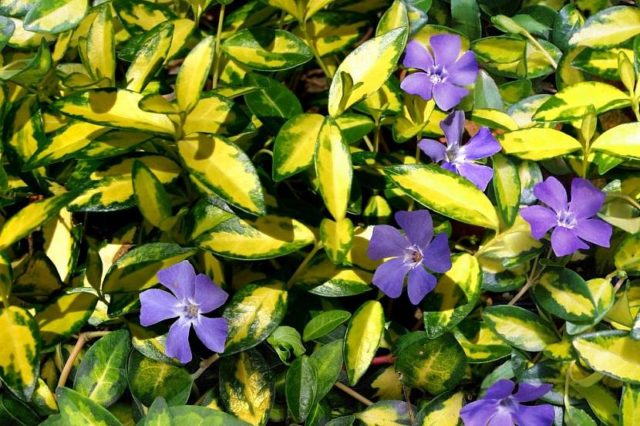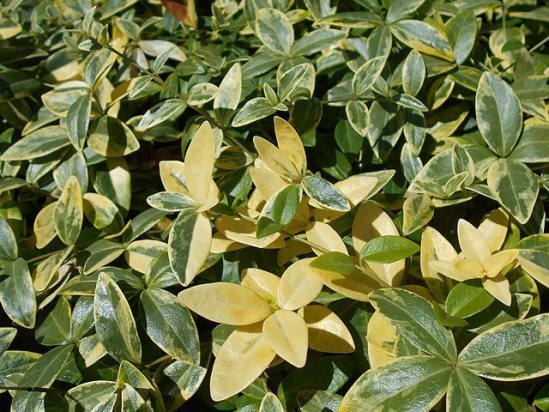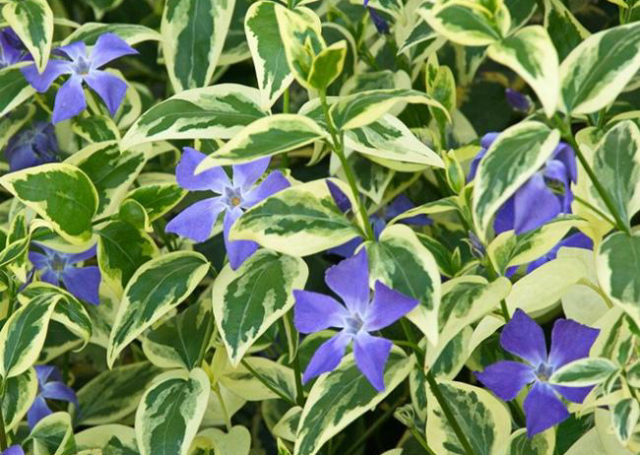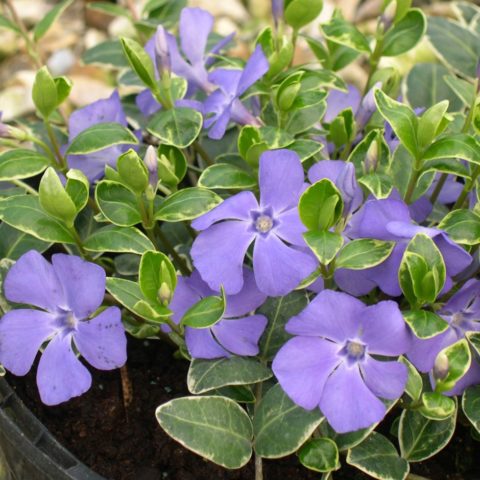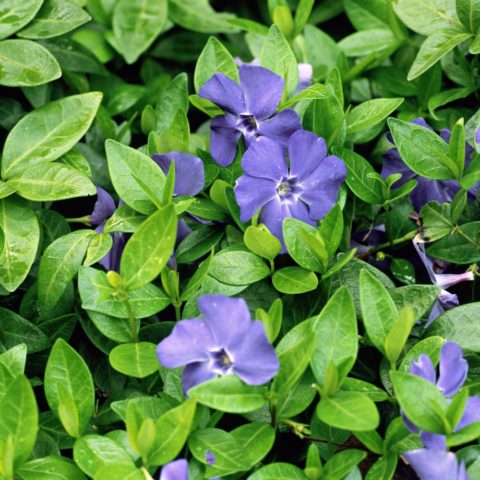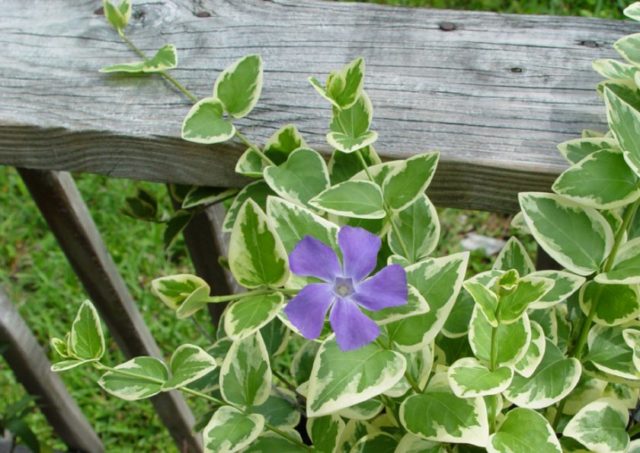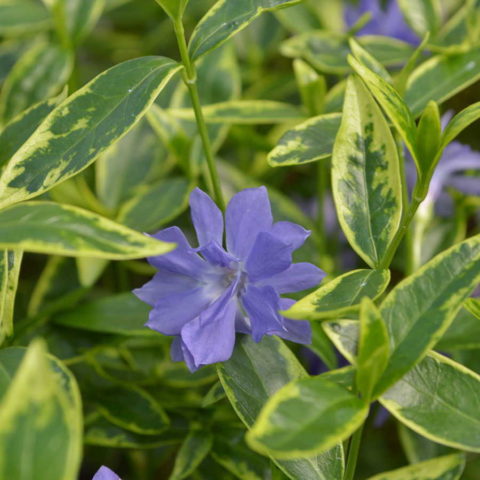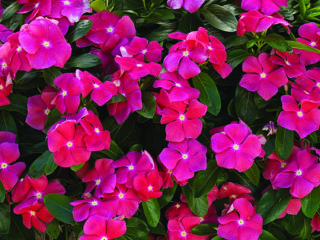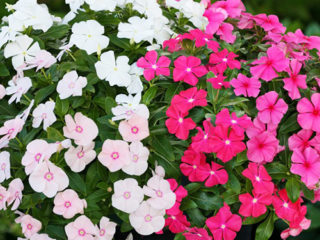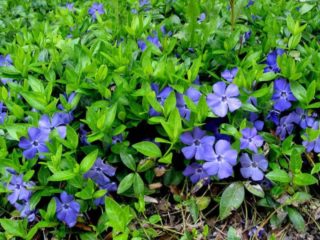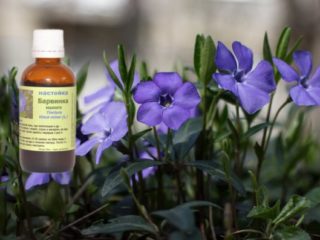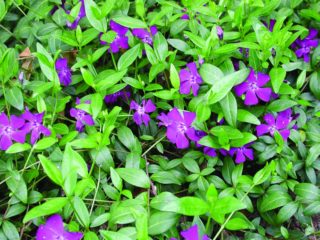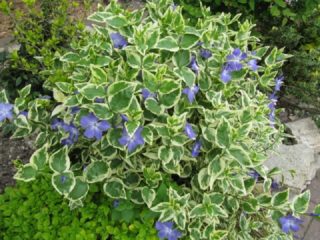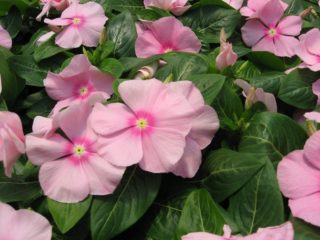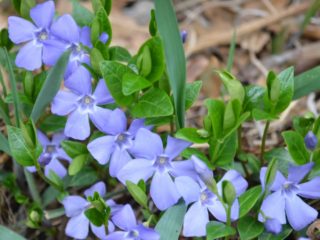Content
Periwinkle is an evergreen plant that is often used to decorate areas. There are several species that differ in color and other external characteristics. One of them is variegated periwinkle; its leaves are not dark green, but with a light, wide border. By this feature it is easy to distinguish it from other plant species.
Description
Variegated periwinkle is a groundcover perennial, subshrub with creeping, thin long shoots. They branch easily and take root in internodes. The plant has oval-elongated, leathery leaves located oppositely on the shoots. In the variegated variety, they are painted in 2 colors - the middle is green, the edges are much lighter, with a greenish tint. The border is wide and uneven, asymmetrical.
Peduncles grow in the spring, at first they grow upward and can reach a length of 15-20 cm. After flowering they lie down. The flowers of this species of periwinkle, like the ordinary one, are azure-blue, funnel-shaped, small in size (about 2 cm in diameter). Solitary, found in the leaf axils. Flowering occurs at the end of April or mid-May and lasts up to a month.
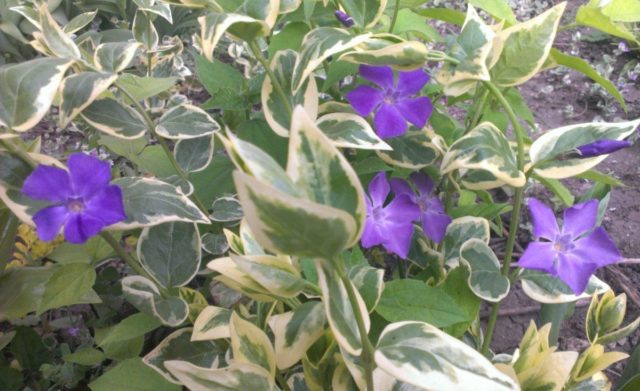
The variegated variety of periwinkle is easily distinguished by its leaves with a light border.
Varieties
Variegated periwinkle (Variegata) belongs to the species Vinca major and includes varieties whose leaves have a whitish (Argenteovariegata) or yellowish (Aureovariegata) border. The color of the stripe may change depending on the conditions in which the plants are located and their age. For different varieties, the width of the border can be different, as well as the color of the flowers - blue or white.
Popular varieties of variegated periwinkle with a yellow border:
- Golden (Golden);
A variety of periwinkle with leaves that are almost entirely yellow or have a characteristic border along their entire length.
- Valley Glow;
Differs in the average size of leaves and flowers
- Blue and Gold (Blue and Gold);
Plants of this variety can bloom again in early autumn
- Sunny Skies (Sunny Skies).
Flowers have a stable color and do not fade in intense sun
White border of flower varieties:
- Alba Variegata (Alba Variegata);
Long-blooming variety that can last until July
- Ralph Shugert (Ralph Shugert);
The plants have oval rather than elongated leaves and large purple flowers.
- Bowles’ Variety;
The plant is resistant to weather conditions, has a large flower and grows quickly
- Sterling Silver (Sterling Silver);
The variety is drought-resistant, grows well in the shade
- Moonlit (Moonlight).
The flowers consist of several layers of petals and are considered rare and one of the most beautiful varieties.
How and when to plant in open ground
Periwinkle of the variegated variety grows well in any type of soil, takes root easily and grows quickly, covering the area with a dense green carpet. This plant, which tolerates shade without problems, can grow under trees, although it prefers partial shade.It can be planted anywhere, both in sunny areas and in completely shady areas.
On fertile soils, the plant can become aggressive, growing, suppressing the growth of not only small neighbors, but also large and strong ones. Even weeds cannot penetrate through the dense carpet created by the shoots and leaves of the periwinkle. This feature of the flower can be used by planting it in areas that need to be freed from weeds.
Variegated periwinkle takes root easily, all it needs after transplanting is moist soil, so it can be planted at any time during the warm season. But most often it is replanted in the spring before flowering or in mid-autumn. In summer, transplantation is also possible, in rainy and cool weather. Due to their rapid growth, the bushes are placed at a distance of at least 30-35 cm from each other.
Care
Variegated periwinkle, like all types of this crop, is completely unpretentious and very easy to care for. Its roots penetrate deep into the soil and can draw moisture from the lower layers, so the flower does not need constant watering. It needs to be irrigated only after transplantation; after rooting, it can get by with natural watering. Mature bushes may only need watering in the hot summer.
Periwinkle of the variegated variety does not need to be fed, but it responds well to this procedure. It can be fertilized with any mineral compounds or organic matter (humus, peat compost, 2-3 kg per 1 sq. m). They need to be applied in the spring, at the beginning of the growing season, and in the fall, after it ends.
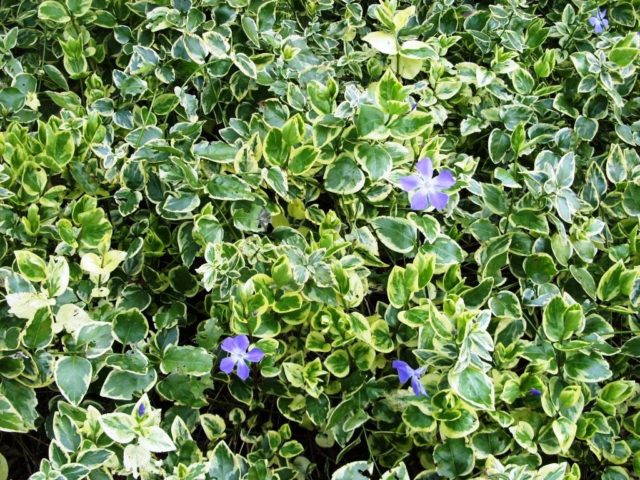
Periwinkle grows quickly even with minimal care
Diseases and pests
Variegated periwinkle is quite resistant to many diseases, sometimes affected by powdery mildew, often after prolonged rains. Among the pests it is attacked by aphids and scale insects. They need to be combated by spraying with a soap solution and insecticides created to kill insects of these species (Aktara, Match, Enzhio, Actellik). Preventative treatments also won’t hurt; they can be carried out in spring and mid-summer.
Trimming
In order for the area with periwinkle to look neat and the plants not to grow too much, they need to be trimmed. This operation is carried out in spring or autumn; all shoots that extend beyond the area designated for the flower are removed. Thinning is also carried out if the plants are too thick.
Preparing for winter
Periwinkle is a cold-resistant crop and does not need shelter for the winter. But for reliability in regions with cold winters, it is advisable to insulate it. You can use fallen leaves as mulch. If periwinkle grows under trees, then the leaves that fall in the fall will serve as a natural insulating material for it. Variegated periwinkle is an evergreen plant, and even under snow its leaves remain green.
Reproduction
The easiest way to propagate variegated periwinkle is vegetatively - by dividing the bush or transplanting rooted cuttings. Divisions and shoots take root quickly and without problems. You can replant periwinkle in early spring or autumn, after pruning. Trimmed parts of shoots with roots are well suited for propagation. They do not need to be rooted first; they can be immediately planted in a permanent place. Planting cuttings is very simple; just make small holes, bury the shoots 2/3 of the way into them, leaving a few leaves above the surface.Then you need to water them and sprinkle them with soil. After planting, water for at least 2 weeks.
Variegated periwinkle is propagated by dividing the bush in early spring. The bush is dug up with its roots and divided into several equal parts. The holes are created at such a depth that the entire root system can freely fit into them. The delenka is placed in the hole, the roots are straightened, watered and covered with soil. The distance between neighboring bushes should be at least 30 cm.
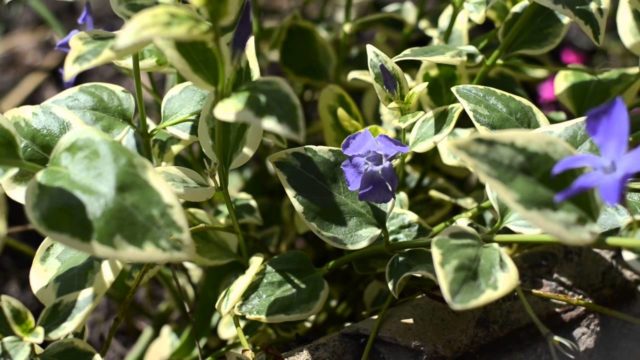
The easiest way to propagate periwinkle is by cuttings - the tips of shoots
Another way to propagate variegated periwinkle is by seeds. They ripen in fruit pods and are harvested in September. They need to be selected from dry boxes, dried and sorted. Place in a paper bag or fabric bag and store in a cool, dark place.
Periwinkle seeds are sown in February or early March. Plastic cups with a volume of 0.25 ml can be used as containers. They are filled with loose and fertile substrate (a universal mixture for growing indoor flowers is perfect). Place 2-3 seeds in each glass to a depth of 2 cm, water and sprinkle soil on top. The containers are covered with a light film and placed on a warm, illuminated windowsill. The room temperature must be at least 20˚C.
Variegated periwinkle seeds germinate approximately 2-3 weeks after sowing. After this, the film is removed. Caring for small plants involves watering and fertilizing. Water them so as to keep the soil moist; warm, settled water is needed. Feed periwinkle seedlings with complex mineral fertilizers (every 2 weeks). When the plants reach a height of 10 cm, they can be transplanted to the site.
It happens that the plant does not bloom. This can happen if the bush is old, in which case it needs to be dug up and replaced with fresh cuttings. Young periwinkle does not bloom most often due to lack of water, nutrition or lighting. If you correct mistakes in agricultural technology, the plant will definitely bloom.
Photos in landscape design
Variegated periwinkle can be planted near trees and bushes, fruit and coniferous trees, near borders, paths, and on any areas that need to be landscaped.
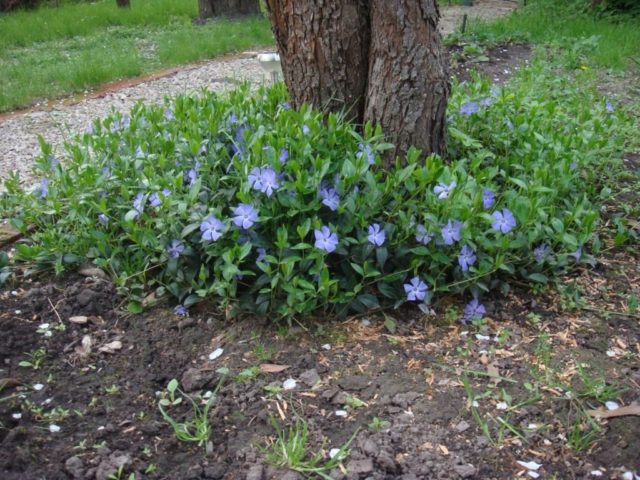
The plant feels great in the shade under trees.
Periwinkle can be a good background for many ornamental plants traditionally grown in the garden. It looks especially beautiful with spring flowers: primroses, forget-me-nots, lungwort, hyacinths, scillas, aquilegias.
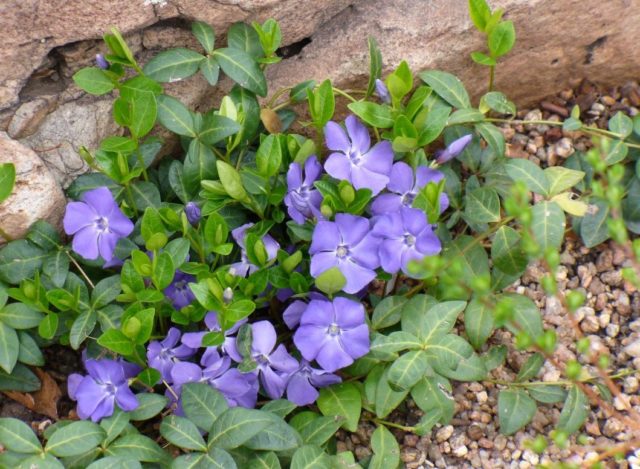
The plant looks good next to stones
It is used to improve unsightly areas, planted on the dividing strip between garden paths and flower beds, near an alpine hill.
Landscape designers consider variegated periwinkle to be a universal plant that can be planted in any part of the site, in a sunny or shady place, and it will look beautiful everywhere.
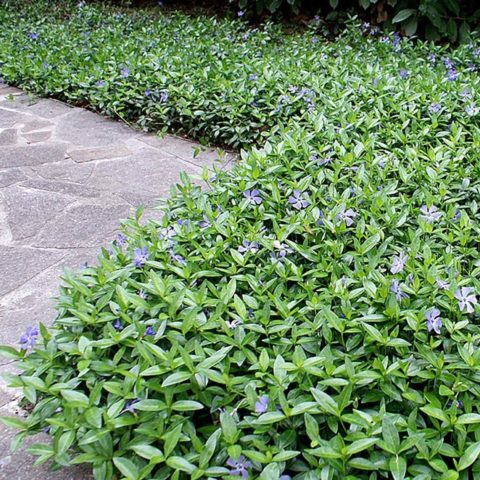
One of the traditional places for placing periwinkle is along garden paths
The flower can be grown in pots, containers, or placed on decorative stands. If grown in pots, it must be replanted every year in a new substrate. In this case, variegated periwinkle requires more careful care; it needs to be watered more often, especially in the heat, and fed.
Conclusion
Variegated periwinkle grows on any soil and in any climatic conditions. This is a very unpretentious flower that requires minimal care. It can decorate any area and goes well with most ornamental crops.
